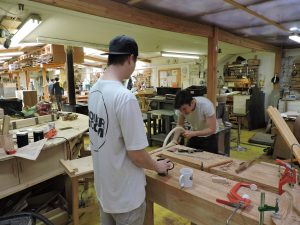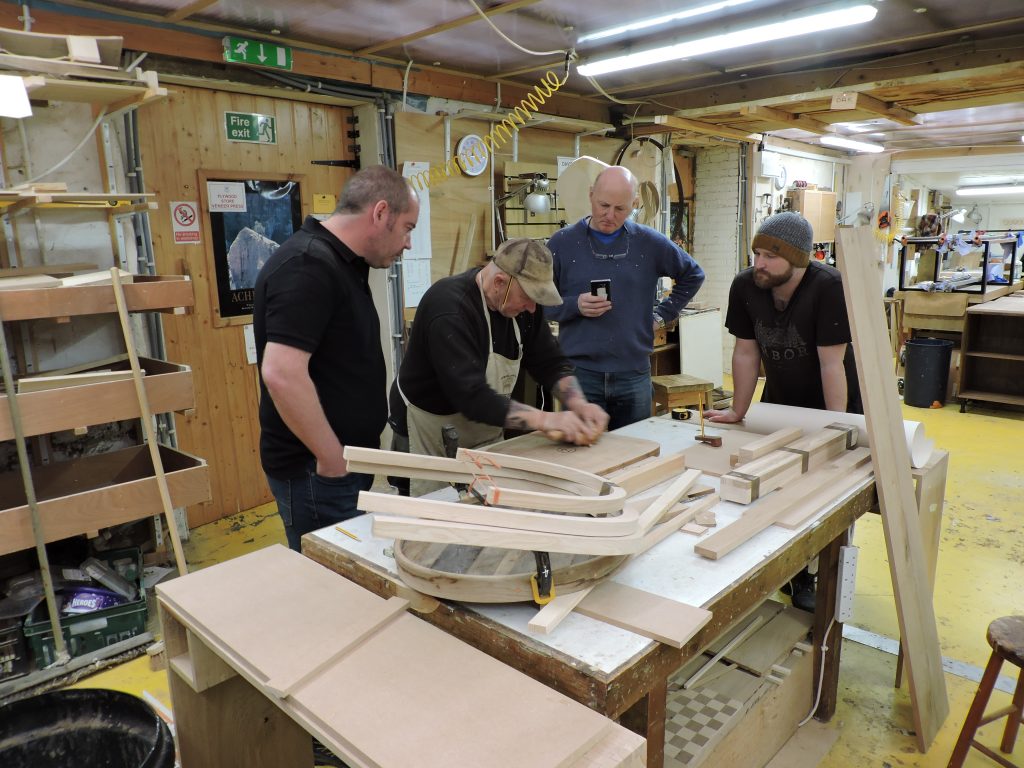This week our school has been transformed into a house of Windsor.
Or, putting it a different way, our professional course students are learning how to make a Windsor chair.
They work in teams of four to make their chairs, under the expert guidance of Tom Thackray and Stephen Langton.
Tom is a veteran of the Windsor chair, having been making them – and teaching others how to make them – for some 50 years.
He’s at the school this week with his son-in-law Stephen and, together, they make a formidable teaching duo.
Working in teams also has a historic echo because, traditionally, there were three people involved in Windsor construction.
First, there was the chair bodger who made just the legs and stretchers on a pole lathe.
Second, was the benchman who produced the seats and other sawn parts.
Finally, there was the framer who would take output from the bodger and benchman and finish the chair.
The art of making a Windsor chair involves honing such skills as turning, precision drilling, stick making and steam bending.
It therefore brings together several skills that can be applied to many other kinds of furniture.
“It’s a great introduction to professional woodworking because making a good-looking functional chair is, in many ways, the very basis of furniture design and making,” says Tom.
It’s probable that the chair derives its name from the town of Windsor, which became the centre for the trade between the producers and the London dealers, although variants of the chair were – and are – made worldwide.

While the Windsor chair may be relatively simple, it’s a design that made the renowned craftsman Sam Maloof famous.
He’s the American woodworker whose finely-crafted chairs have been bought by film stars and US presidents.
His work is also in the collections of several major American museums, including the Metropolitan Museum of Art, the Los Angeles County Museum of Art, the Philadelphia Museum of Art, and the Smithsonian American Art Museum.
Sam Maloof, who died in 2009, always referred to himself a “woodworker” because, as he said, “it’s an honest word.”
“Honesty is what making a Windsor chair teaches you,” says Tom, “because every joint and drilled hole is always visible, so there’s nowhere to hide if you get things wrong.
We’ll bring you pictures of some of the finished Windsors.
